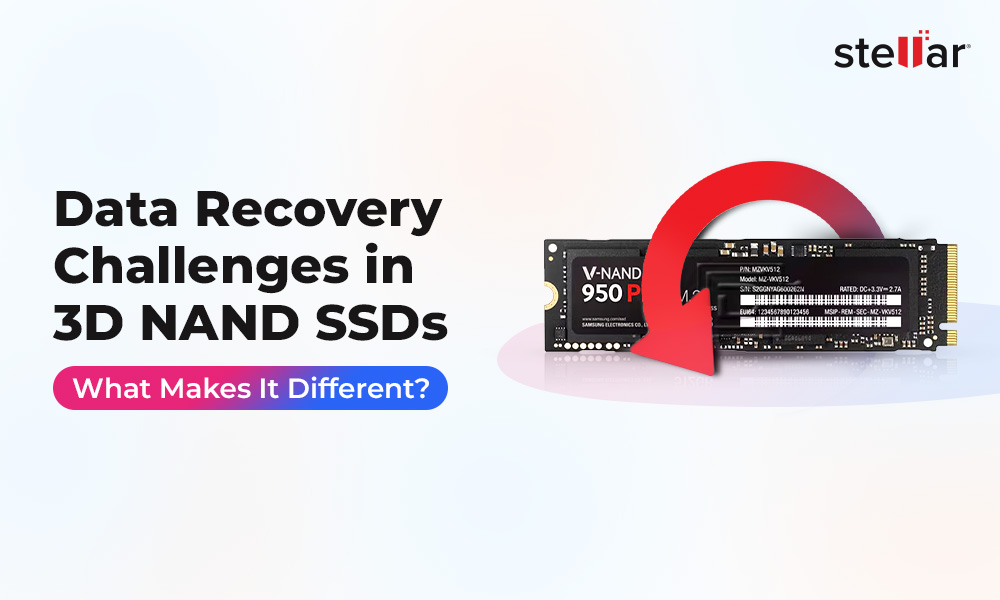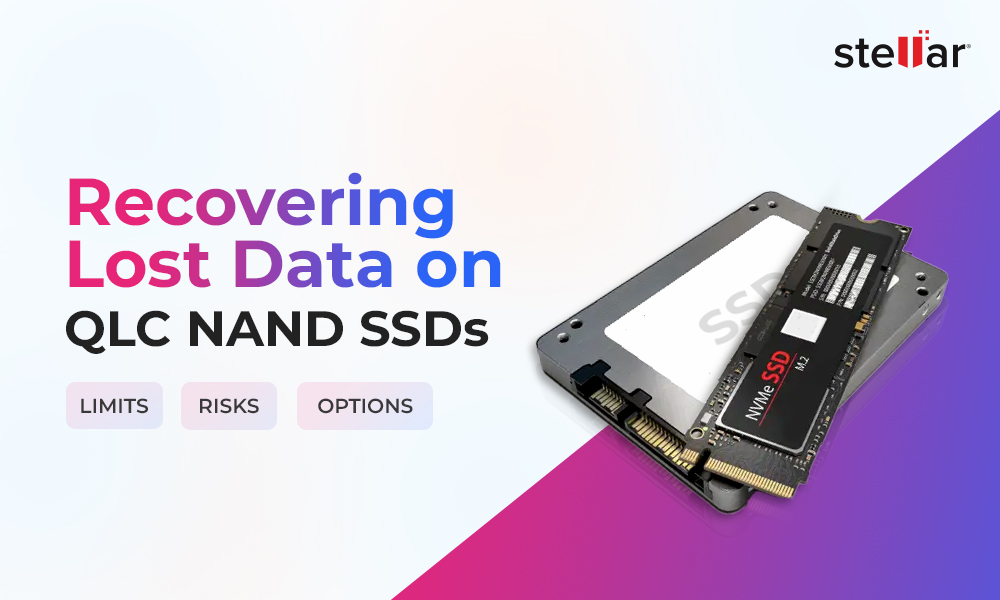Imagine a hard drive as a busy library. A single librarian (the actuator arm) fetches books (data) from the shelves (platters). As data centers grew, one librarian became a bottleneck. Dual-actuator HDDs solve this by essentially “hiring a second librarian.” In these drives, the usual single actuator assembly is split into two independent sets of arms and heads. The result? The drive can access two different parts of the disk at the same time, roughly doubling throughput and I/O operations per second (IOPS) over a traditional HDD. For example, Western Digital’s new Ultrastar DC HS760 20 TB drive (with dual actuators) reaches around 582 MB/s – on par with a high-end SATA SSD.
How Dual-Actuator HDDs Work
A standard HDD has one actuator: one pivot with one set of arms carrying all the read/write heads. A dual-actuator HDD puts two actuators on the same spindle. Each actuator has its own motor and controls its own group of heads. Crucially, the two actuators operate independently and in parallel. In practice, one actuator can be reading or writing in one region of the disk while the other does the same elsewhere simultaneously.
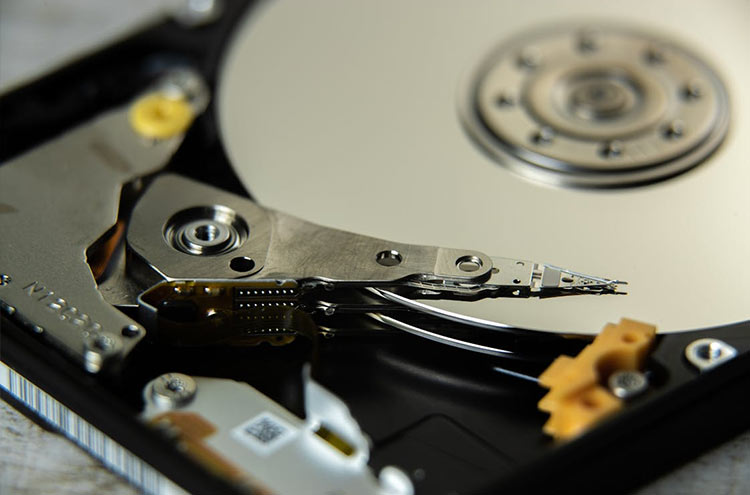
To the host system, a dual-actuator drive often appears as separate logical devices. Over SAS interfaces, the drive typically shows up as two equal-capacity LUNs (Logical Unit Numbers) – effectively splitting the drive in half. For example, an 18 TB dual-actuator SAS drive might appear as two 9 TB volumes. On SATA interfaces, the host may see a single large volume, but internally the data is striped between the two actuators. All of this requires sophisticated firmware to coordinate the two arms, synchronizing servo (positioning) data and timing between them.
Benefits: Speed and Capacity
Dual-actuator HDDs target workloads that need huge storage and better speed than single-actuator drives. Key advantages include:
- Much higher throughput: Two actuators can roughly double sequential transfer rates. For instance, WD’s 20 TB dual-actuator drive achieves about 582 MB/s. Large file copies and backups run much faster than on a typical single-actuator drive.
- Increased IOPS: Parallel heads mean more simultaneous operations. In theory, two actuators can nearly double the IOPS. In practice, vendors report real-world gains: WD saw about 1.7× better random read/write performance on its dual-drive model. Seagate’s MACH.2 drives similarly deliver substantial boosts.
- Faster rebuilds and backups: Double the data channels often halves the time for whole-disk tasks. A huge drive that might take days or weeks to rebuild in a RAID can complete in roughly half the time with dual actuators.
- Improved efficiency: One dual-actuator drive can outperform two single-actuator drives of equal capacity, using less power. WD notes ~37% lower power use compared to two separate 10 TB drives. You save on energy and rack space while doubling performance. Even after partitioning the disk, it was found that the partitions pull similar speeds, which implies that a user can get double the speed if they go ahead with the disk partition.
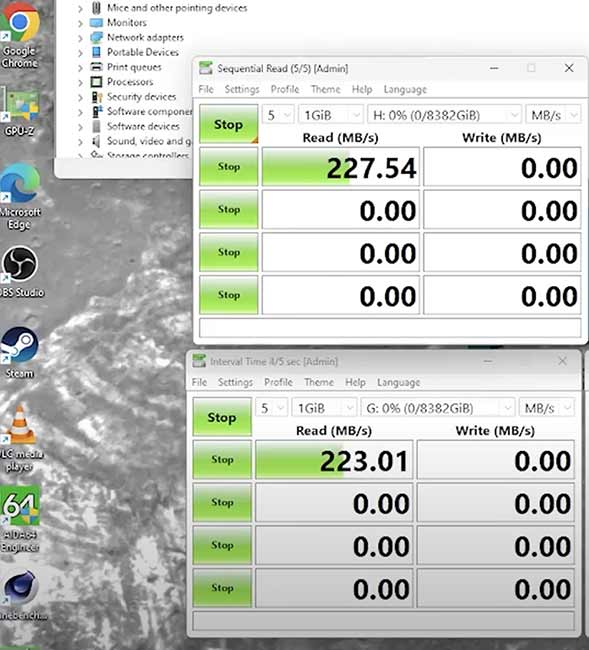
These benefits are especially appealing to hyperscale cloud providers and enterprise data centers. Dual actuators allow HDDs to keep scaling in capacity (toward 30–40 TB) without crippling performance. In short, they help HDDs remain viable for demanding workloads that need tons of storage.
Real-World Examples
Dual-actuator HDDs are already shipping for enterprise use. Western Digital’s Ultrastar DC HS760 is a 20 TB drive with dual actuators. Seagate offers the Exos 2X14 (14 TB) series. These are 3.5″ drives for servers. For example, the HS760 uses nine 2.2 TB platters and two sets of heads. It connects via SAS and presents two 10 TB LUNs to the host, letting servers stripe I/O across both halves. In effect, one physical 20 TB drive can behave like two drives in parallel, delivering SSD-like throughput for large sequential transfers.
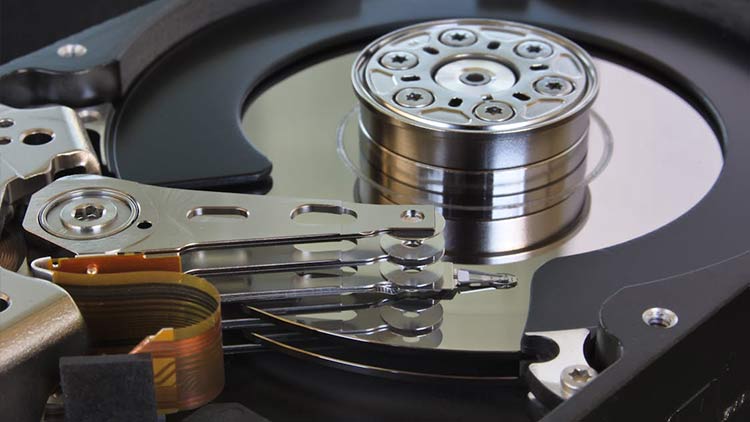
Drawbacks and Trade-Offs
Dual-actuator HDDs also have costs and complexity:
- Higher cost: Extra actuators and precision engineering make them more expensive per TB. Analysts note they cost “a little bit more” than conventional drives. This premium may be fine for large buyers but deters average users.
- Increased complexity: Two actuators mean twice the moving parts. The firmware must coordinate both sets of heads, handling separate timing, temperature, and servo data. Earlier multi-actuator designs even suffered from higher heat and power consumption (today’s materials help, but the inherent complexity remains).
- Limited compatibility: Fully using both actuators often requires specific host support. SAS drives showing two LUNs may need compatible controllers or drivers. SATA drives might act like normal drives unless configured. As a result, not all systems automatically see the performance gain.
- Reliability unknowns: More parts could mean more failure points (though one could hope that if one actuator fails, the other might still read half the data). Manufacturers claim their dual-head drives meet the same MTBF as standard HDDs, but broad real-world testing is still ongoing.
In summary, dual-actuator drives give a big performance boost and capacity leap, but with higher price and engineering overhead. They’re a cutting-edge niche for data centers, not something most desktops need right now.
The Data Recovery Puzzle
If a dual-actuator HDD suffers data loss, recovery becomes more challenging. Your files still reside on the platters, but the data is effectively split between two actuator heads. Recovery experts emphasize that dual-head drives don’t make data unrecoverable, but they do complicate the process. In essence, the drive functions like a built-in RAID-0 array.
For example, suppose a 20 TB SAS dual-actuator drive appears as two 10 TB volumes. A given file might have some blocks on volume A and some on volume B. If one actuator fails, that half of the data becomes inaccessible by normal means. Ordinary recovery tools (which expect one contiguous stream) may get confused. You would need to recover from each “half” and then stitch the file back together.
Key challenges include:
- Data interleaving: Dual-actuator drives stripe data. A recovery process must locate and merge pieces from both actuator sections. Losing synchronization or mixing them up can corrupt the reconstructed files.
- Firmware complexity: The drive’s controller handles two data streams. If its own firmware or metadata is damaged, special updates or repair may be needed to restore access to either side.
- Software limitations: Most consumer recovery programs assume a simple disk. A dual-LUN layout can confuse them. Professional tools (or specialized lab equipment) are often required to reconstruct a complex volume.
In effect, recovering a dual-actuator disk is like solving a tougher puzzle. However, with care and the right tools, you can still get the data back. The strategy is to image each part of the drive and then use advanced recovery software (or lab services) to rebuild the files.
Recovery Tips and Approach
If you face data loss on a dual-actuator HDD, follow these best practices:
- Stop using the disk: Power down immediately. Writing new data risks overwriting parts of the interleaved layout. Protect every sector.
- Clone the drive: If you can, make a full sector-by-sector image of the disk. Use a separate high-capacity drive. Work from the clone so you never alter the original.
- Use advanced recovery software: Basic undelete tools usually won’t handle dual-actuator layouts. Look for professional-grade recovery software with deep scan capability. Such tools read raw sectors and can follow data across multiple partitions or LUNs.
- Scan both volumes: If the drive presents two partitions or LUNs, ensure the software scans both fully. You may need to recover one side first, then the other, and merge results by filename or date.
- Boot from USB if needed: If the host OS is compromised, create a bootable USB recovery media. Running the recovery program outside Windows avoids OS interference.
- Preview files: Good recovery tools show previews (images, docs, etc.) of found files. Use this to verify your important data is detected before you recover it.
- Consider professional help: If the disk has physical damage or you can’t do it yourself, data recovery labs have cleanrooms and specialized gear. They handle rare drives and firmware issues regularly.
Following these steps maximizes your chance of success. Note that scanning a huge dual-actuator drive can take a long time (hours or days), so be patient.
Using Professional Data Recovery Software
A powerful and Professional data recovery software program like Stellar Data Recovery Professional can simplify even complex cases like dual-actuator drives. Key features include:
- Deep scan/RAW recovery: The software reads every sector to find lost files by signature, even if partitions are missing or damaged.
- Large-volume support: It can handle multi-terabyte disks and multiple partitions/LUNs as part of one recovery job.
- Encrypted/formatted drive support: It can even recover data after accidental format or from a BitLocker-encrypted volume (if you have the key).
- Bootable rescue media: It lets you run recovery on an unbootable PC by creating a USB or CD recovery disk.
- File preview: Shows a tree of recoverable files (photos, documents, etc.) before you restore them. You can confirm your data is there first.
Importantly, Stellar WDR professional offers a free trial or demo. You can download it, scan your drive (or its image), and see a list of recoverable files. Only if you see your critical files will you buy the software to unlock the recovery. This “scan before you pay” model lets you tackle even a dual-actuator recovery with confidence. In many cases, using a top recovery tool to image both halves and piece together the data is enough to rescue the files, saving you from needing exotic lab equipment.
Conclusion
Dual-actuator HDDs are a leap forward in hard drive design: they effectively put two read/write assemblies in one enclosure, allowing enormous capacities (20 TB and up) without a huge performance penalty. With a careful approach and the right tools in your pocket, you can get data back in your existing drive.
First, clone the drive to preserve it. Then use a professional recovery solution to deep-scan both halves and reconstruct your files. In short, dual-actuator drives give your HDD “two brains” where there used to be one, boosting capacity and speed impressively. And if one of these two-headed drives gets sick, the right recovery strategy (and a little tech help) will get your data back.












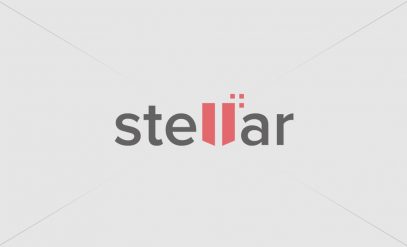
 9 min read
9 min read